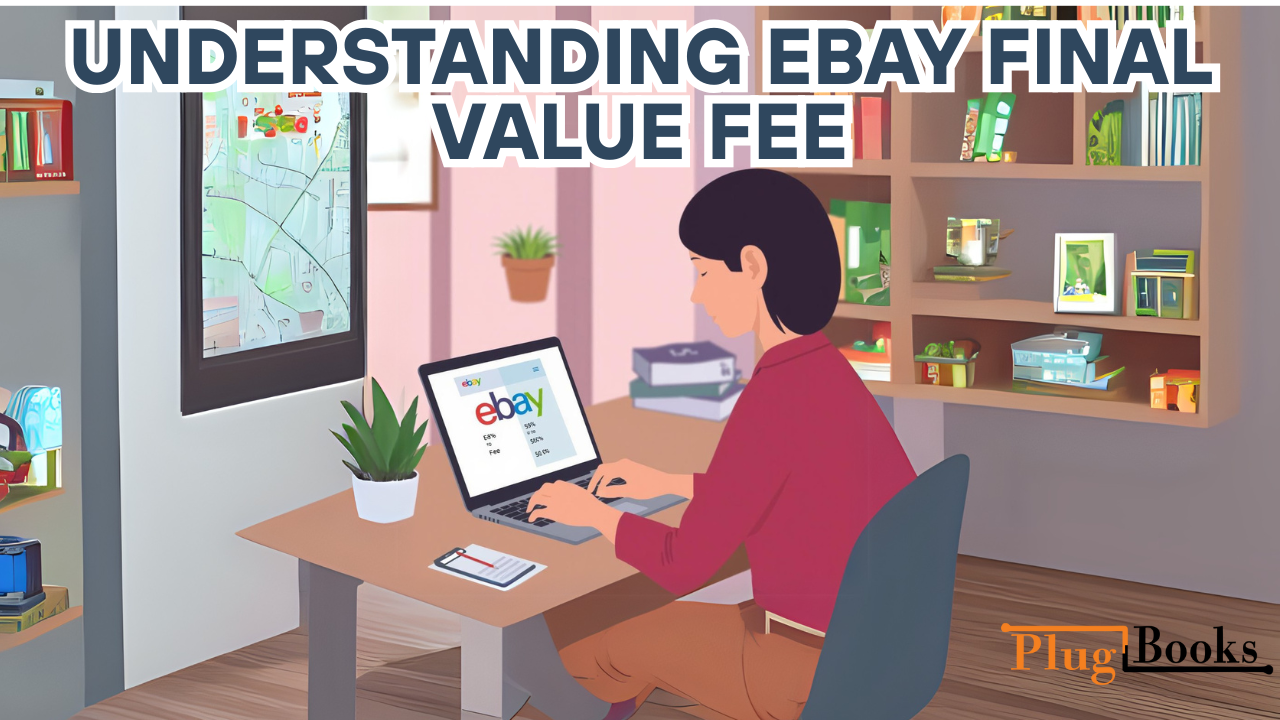eBay sales might be a great approach to turn your products into income and get a worldwide market. Like every other marketplace, eBay does, however, charge fees for its services. The eBay final value fee is among the most significant ones you will pay.
Maximizing your earnings and determining your rates depend on an awareness of this cost. We will dissect in this post the final value fee on eBay, how it is computed, and how you might utilise an eBay final value fee calculator to acquire a realistic estimate.
Key Points:
- Comprising shipping as well, eBay Final Value Fee is a percentage of the overall sale price.
- Fee rates change depending on category and kind of seller—business vs. personal.
- Project fees before listing using an eBay Final Value Fee Calculator.
- Plugbooks tracks eBay fees and coordinates with Xero and QuickBooks.
Knowing fees will enable you to maximise profits and effectively price goods.
What is the Final Value Fee eBay?
An item you sell eBay final value fee is a percentage of its whole transaction price. This covers the price of the item as well as any shipping charges the customer pays. Basically, eBay is cutting it since it offers the platform and tools required to enable the sales. Knowing how eBay operates will enable you to properly price your products, even though your seller account and the product category will affect its fees.
One of the most important expenses sellers incur is the final value fee; hence, knowing exactly how much you will owe can help you avoid many shocks down the road. Let us explore more how eBay determines this fee and how you could forecast it.
How Does eBay Calculate the Final Value Fee?
Usually computed as a percentage of the whole sale price, the eBay final value charge is The item type and your seller status e.g., commercial seller vs. individual seller will affect the charge schedule. The typical fee percentage for most categories falls between 10% and 12% of the whole transaction price.
For instance, eBay will take a percentage typically 12% or so of the overall sale price, which is $110, if you sell something for $100 and charge $10 for shipping. Consequently, the value fee at last would be about $13.20.
Refer to eBay’s fee schedule to determine the precise proportion for your item; it varies based on the category. Knowing these specifics will enable you to better project your profits and prevent paying too much taxes.
Using an eBay Final Value Fee Calculator
Before you ever offer your goods, would it be beneficial to know exactly how much eBay will charge? An eBay final value charge calculator is therefore quite helpful. These instruments let you fast project the expenses depending on the sale price and transportation costs.
These calculators are used by many vendors to create their pricing strategy, therefore assuring that the final value fee does not significantly reduce their earnings. Just enter the sale price and shipping cost to utilise an eBay final value fee calculator; the tool will project the fee amount.
This can save a lot of time and enable you to guarantee you never lose money by helping you to set more competitive prices.
Tips for Minimizing eBay Final Value Fees
Although eBay’s final value fees cannot be totally eliminated, there are certain ways you might assist lower them. Here are some pointers to consider:
- Choose the Right Category: Fee percentages for some categories are less than those of others. Selling gadgets, for instance, can have different fees than selling clothes. Knowing the pricing of your category will enable you to make wise choices.
- Factor Fees Into Your Pricing: To ensure you pay for them. To pay the fees, you would have to raise your sales price significantly, thereby preserving a solid profit margin.
- Use Promotions to Increase Sales: eBay provides a range of promotional techniques to help your listing stand out, thereby enabling faster sales and maybe lessening the total impact of fees.
How Can Plugbooks Help You Keep Track of Your Fees?
Effective management of your business depends on eBay vendors tracking fees and other transactions. Plugbooks.io is one tool that could assist you to simplify this process. Easy syncing of your sales data, tracking of your eBay fees, and handling of your funds is made possible by this accounting program’s automated connections with QuickBooks and Xero. Using Plugbooks can help you to make sure you never overlook a significant cost or transaction, enabling you to concentrate on expansion of your company.
By automatically syncing sales and fees, Plugbooks helps eBay sellers simplify accounting chores by lowering the chance of human error and allowing more time to concentrate on what is really important to your business.
Conclusion:
Although selling on eBay depends on the final value fee, knowing how it operates will provide you a major benefit. Knowing how to figure this fee and apply an eBay final value fee calculator can help you more precisely price your products and reduce the effect on your profits.
Tools like Plugbooks can also simplify your bookkeeping, helping you to handle eBay payments and fees. These realisations will help you to be on your road to become a more successful and effective eBay vendor.
FAQs:
- What is the eBay Final Value Fee?
Following your item’s sale, eBay takes a percentage of the overall sale price, that is item plus delivery.
- How is the fee calculated?
It is determined using the whole selling price. Depending on the category, the fee usually runs from 10% to 12%.
- Can I reduce these fees?
Though you cannot completely eradicate them, you can reduce them by selecting the appropriate category and including the cost into your price.
- How can I calculate the fee?
To project the fee before listing your products, use an eBay Final Value Fee Calculator.
- Do all sellers pay the same fee?
No, the kind of the seller account and the product category determines the fees.




5 thoughts on “Understanding eBay Final Value Fee: A Simple Guide to Fees and Calculators”